The simple answer is yes, no and sort of. Presuming the question is “Can I learn to write for my business?” not “Can I become the next Virginia Woolf?” then we can at least get some of the way there.
TL:DR
What can be taught
In his book On Writing, Stephen King outlines the basics of a writer’s toolbox. This involves understanding grammar (even if you choose to ignore it), avoiding the passive voice and eliminating unnecessary adverbs.
These are fairly easy fixes. Tweaks that can be applied to your existing writing to make it more readable. They are the kind of principles that can be learned – that you can even teach yourself.
King says you cannot teach a good writer to be a great one. And you cannot teach a bad writer to be a good one. But you can teach a competent writer to be a better one. Read any of our ‘how to’ blogs and you will find ways to take your writing up a notch.
“The gift of a good editor is what hones a writer from a free-spirited creative into a focused force.”
What takes time
There are ways to improve your writing. But the amount of time you can invest in writing is an important factor. Think of it like learning the piano. With a little practice you can learn to play Coldplay’s Clocks. But it takes a lot longer to learn how to play Shostakovich. Like, years.
If you have the time to invest, spend it reading and writing. And reading. And writing some more. Much about good writing is learning to recognise the rhythm in a paragraph, the subtleties in sentence structure. This kind of pattern recognition is the product of a seasoned professional. It takes work, but it can be done.
If you’re talking about copywriting, you also need to add in a bunch of stuff that fits around the writing. Like consumer psychology. Brand personality. Customer journeys. General marketing strategy. Copywriting, as we’ve said before, is not just any old writing.
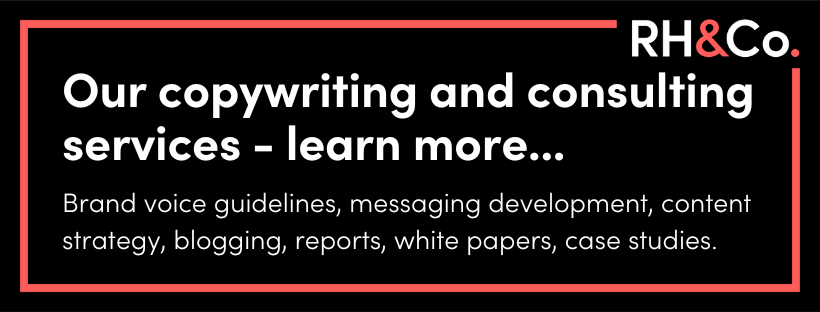
Learning from others
Almost as important as the time you invest is the feedback you receive. The gift of a good editor is what hones a writer from a free-spirited creative into a focused force. Every writer has their blind spots and every new writer has many.
A good mentor stops you from second-guessing your good writing and they can tell you straight when a paragraph is a load of waffle. They can help you grow in confidence and inspire you to take your writing beyond the perimeters of your own thinking.
If you don’t have an obvious mentor to hand, bounce ideas off your friends and colleagues. What does that word make you feel? Does this sentence make sense or is it confusing? Would you be interested enough to read to the end of that paragraph if I didn’t tell you to?
Other people’s feedback can begin to build an awareness in you of what your writing is actually communicating.
What can’t be taught
No one can be taught to enjoy writing. If you hate it, if it bores you, you’d be better investing your time elsewhere. In this case, delegation could be your new best friend. Check for writing talent hiding in your staff team or hire a copywriter to make sure your writing is as good as it can be (yes, that was a subtle sales pitch!).
Finally, for some people writing might be something they really want to do, but each and every time they sit at the keyboard their head fills with fuzz. This is a greater creative block than the kind you solve with a few new writing principles.
If that describes you, don’t give up on a desire to write – but writing for your business probably isn’t the kind of pressure you need right now. Take a step back and take some creative risks in a less hazardous arena. Have a go at poetry, a short story, a comic sketch – there’s more than one kind of writer. Mix it up and maybe that creative fuzz will fade and something new will take its place.
It’s not the sexiest page on any given website, which means it can often be overlooked. But the humble FAQs page is actually an extremely important one, which every single business should prioritise. Here’s why.
TL:DR
- It’s useful for your audience
- It stops you from repeating yourself
- It qualifies your leads
- It’s good for getting keywords in
- And there are other SEO benefits too
- In support of the humble FAQs page
1) It’s useful for your audience
This is the first and most important factor to take into consideration, because – as with all of your marketing – your audience needs to come first. A good FAQs page will provide real value to your website visitors, answering many of the questions they have and ideally helping them move along the buyer journey towards working with you.
Start by thinking about the questions you’re asked regularly. What about the objections you meet during sales calls? Are there any mistakes people make when doing business with you that you can preempt with a clever FAQ?
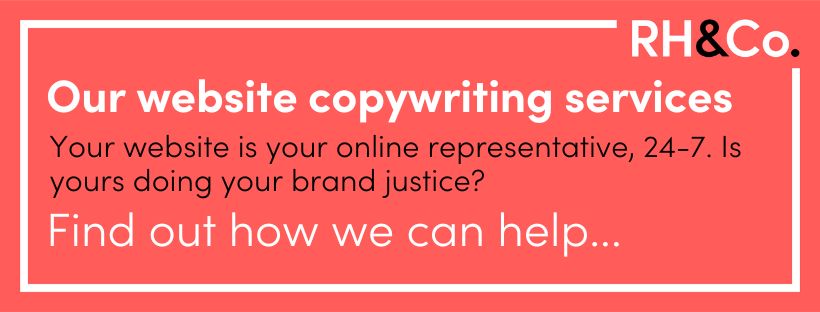
2) It stops you from repeating yourself
Answering questions you often get asked will save you time too. Next time you get an inquiry about one of the issues that is included in your FAQs page, simply direct your correspondent with a link or copy and paste the answer into the email.
You can repeat FAQs in different places too. For example, you might include a few relevant ones on each of your product or services pages. We also share ours on social media, giving us extra content for our content calendar.
3) It qualifies your leads
Once you’ve covered the questions that your audience already has, think about how you’d like to educate them. This is a great way to avoid awkward conversations with people who just aren’t a good fit for you.
For example, on our FAQs page we have a question about whether people can get a discount if they provide us with some draft copy. The answer, in a nutshell, is no. But we’ve used the FAQs page to set out the reason why in a friendly way.
The fact that it’s there for everyone to read means no one will feel like we’re saying no just to them. It’s not personal, it’s policy.
4) It’s good for getting keywords in
Having a well written FAQs page is good for SEO in a number of ways. First, it is a page which by default has a lot of H2 subheads, in which it is quite natural to find a large number of keywords.
For example, our FAQs page includes questions such as:
- What does a copywriter do?
- Copywriter vs content writer – what’s the difference?
- How can a copywriter add value to my business?
All are genuinely questions people have and want answered, but they all contain important keywords that will give us a boost on Google.
The fact that they’re phrased as questions is a bonus, as many people are now searching this way thanks to the advent of voice-activated search.

5) And there are other SEO benefits too
If you’re clever, you can use your FAQs page to create internal links to other content. For example, we have a question about how to prepare for a copywriting briefing. We also have a blog post on the subject, which the FAQ links to.
If someone reads the FAQ and then clicks through for more information, we reduce our bounce rate (the frequency with which someone arrives on a page and leaves without clicking through to another) and increase our dwell time (the length of time someone stays on the website).
In support of the humble FAQs page
From both a human perspective and an SEO one, from your perspective and your customer or client’s, an FAQs page is a useful tool. It’s also super easy to write, as the formatting is naturally simple and formulaic.
You can get that little bit more creative and group your FAQs by subject type or category if the page is getting crowded. If space is an issue you can also hide the answers so they only appear in a pop up box when someone clicks on a question. It may be helpful to have a search box or a form where people can submit their own unanswered questions.
But ultimately if you’ve not got anything yet then just start somewhere and let the page grow as your business does. It might not be the most exciting page but it’s all adding to the effectiveness of your site as a whole.
Every business owner and marketing manager knows that content marketing is a powerful way to build brand awareness, establish credibility, reach potential customers and clients, and ultimately increase leads and sales. What they frequently don’t know is how often they should be creating and sharing content in order to get results.
In a sense, the answer is easy: as often as possible. After all, the more times you can appear on someone’s radar, the more chances you have of convincing them that you’re worth doing business with.
Not everyone will be ready to buy your product or service the moment they first have contact with you. Even once they enquire, statistics show that 63% will still take at least 3 months to make a purchase. So creating regular, strategic content keeps them moving along the buyer journey and helps you stay front of mind so that when the time comes, it’s you they turn to.
But since “as much as possible” is not an especially helpful answer, we’ve broken down some of the elements you need to consider when setting your own particular content goals. By the end of this post you should be more confident in creating a content schedule that will work for you.
TL:DR
- What do you have capacity for?
- Don’t prioritise quantity over quality
- There’s a difference between “create” and “share”
- Rocks, gravel, sand – an analogy
- Prioritise original content that will last
What do you have capacity for?
Are you a sole business owner wearing all the hats? A lone marketing manager juggling all the channels for an SME? Or part of a team of 30 content creators? The answer will have a big impact on how much content you can realistically produce.
Quality original content takes time and effort to create. It’s likely to take you several hours to write a well researched, high value blog post, for example, not to mention the time it takes to source images, upload it to your website and so on.
If you’re using a professional to help you create that content then you will be limited by your budget. But don’t forget that your time has an associated cost too, not just in terms of what you’re paid but the value you could be adding elsewhere in the business if you weren’t creating content.
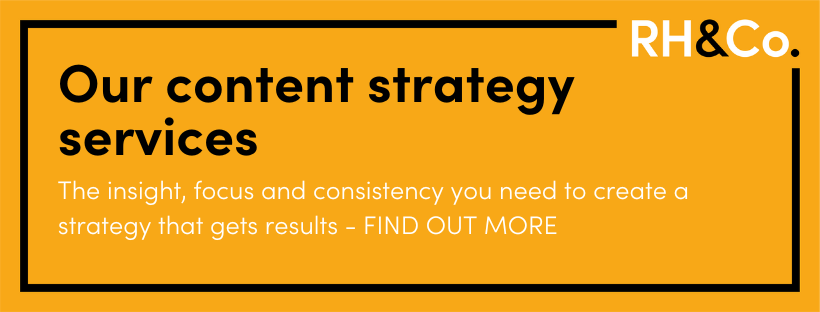
Don’t prioritise quantity over quality
Some people get so fixated on quantity that they lose their focus on quality. There’s no point doing a Facebook Live every single day if you haven’t really got anything to say. Far better to do one once a week and really add value for your audience.
Likewise, don’t spread yourself too thin when it comes to content types and channels. If you’re trying to write articles for LinkedIn, take photos for Instagram, prepare talks for Clubhouse and think of witty soundbites for Snapchat all at the same time, you’re going to burn out quickly.
Plus, does your audience really need all of that? And are they really on all of those channels? Choose one or two content types or channels to focus on, experiment to see where you get the best results and keep iterating so that you direct your attention to the most successful ones.
There’s a difference between “create” and “share”
We use the phrase “create and share” a lot but it really should be “create or share”. Because not all content that you share needs to be created by you. Think about when you read an interesting article in the news or watch a great TED talk and then share the link on your social channels. That’s you getting your brand out there without having to create anything from scratch, except for a few words to caption the post.
These low effort content wins are actually incredibly powerful because they help develop a rounded image of your brand. Rather than constantly pushing your own agenda, by sharing news and views from other businesses and people (ideally tagging them when you do), you’re both adding value and showing you’re connected with your industry or your city.
You can do this from a company page as much as from an individual one. The main thing is to think about what your audience will find valuable, and then go and source it. Does your audience enjoy humorous memes or inspirational quote cards? Would they appreciate being updated on the latest industry research? Go find it for them!

Rocks, gravel, sand – an analogy
Now let’s bring that all together. Think about your capacity as a vase. Work out how many rocks you can fit in there. The rocks are what we at RH&Co like to call foundation content. This might be your blog, for example, or a YouTube channel, or a newsletter, or a podcast. You’ll put the greatest effort into making sure whatever you choose is super high quality and packed with original thought.
Next, you want to start adding gravel. This gravel is the repurposed content that can be chipped off the rocks you created. Snippets and quotes and top tips, which can be produced without a huge amount of extra effort. One ‘10 top tips’ blog post can easily generate 10 individual social media posts, for example. Or you might draw out an interesting quote or statistic from a video and share it as a visual.
And then you can add the sand to fill the gaps. This might be low-effort original content such as a micro post on Facebook or a quick Instagram reel. Or it might be that curated content that you can share without having to input much of your own beyond a couple of introductory lines.
Prioritise original content that will last
Creating content is a great way of getting in front of your audience, adding value, developing your brand reputation and showcasing your expertise. The more you can do, the better – but be realistic about what your capacity is.
Prioritise a manageable amount of foundational content and make sure it’s exceptional quality. As a sole business owner you may only be able to do this once a fortnight – any less and you’re just not to get momentum. Once a week is better, if you can, and if you have the budget or in-house resources then you might consider more.
Then repurpose as much as you can, add low-effort original content and curated content from other sources. It shouldn’t be hard to get 3-5 posts out each week this way. Remember to keep it regular, and don’t give up too easily. It can take six to 18 months to get a content marketing strategy delivering consistent high results. But the results will come.
Should you write your own website copy? It’s a question many founders ask themselves, especially when their business is still relatively new or small.
The answer isn’t black and white. There’s inevitably a cost associated with getting a professional copywriter involved, and it may be that your budget simply won’t stretch to it. But there could be costs if you do the writing yourself too.
Too many people are quite happy to pay for a graphic designer, photographer or web developer to ensure that their website has the right look, but when it comes to the copy they shrug and say, “Oh that’s ok, I can write it myself.”
Unfortunately, being able to write an articulate email or even a blog post isn’t the same as writing effective website copy. So before you get started, it’s worth asking yourself a few questions to make sure that you’re not going to inadvertently let your website down at this hurdle.
TL:DR
- Have I got a structure in place?
- Have I worked out my core message?
- Do I know how to balance benefits and features?
- Can I see from my client or customer’s perspective?
- Do I know how – and when – to move people to action?
- Can I really write?
- Have you got the time?
- Whatever you decide…
1) Have I got a structure in place?
Before you start writing, you need to think about both your sitemap and the structure of the page content itself. It’s not just about deciding which words to use but which ones will go where and in what sort of hierarchy. This is both a design and a copy decision.
You’ll need to understand user experience (UX) and the journey people will take from arriving on the site to taking some sort of action. And you’ll need to support both those visitors who are willing to read every word of copy on the page and those who will be doing no more than scanning the homepage.

2) Have I worked out my core message?
Speaking of scanning, if someone does spend just 30 seconds on your site, what is the one thing you want them to know, think or feel about your business? Have you ensured that your top level copy communicates this quickly and easily?
As well as your core message, you’ll want to think about your supporting messages and how the copy serves these to the right visitors in the right places. People only read an average of 20% of the copy on any given web page, so you need to make sure they get what they need as quickly as possible.
3) Do I know how to balance benefits and features?
You may have heard marketers talking about how copy should highlight benefits over features. What this means is that you need to sell the outcome of doing business with you, rather than the actual facts of your product or service. As someone clever once said, “No one wants a 2 inch drill bit, they want a 2 inch hole.”
But there’s a balance. If you keep going on about how your customer or client’s life or business will be transformed, without telling them how, they’re going to get frustrated quickly. A good website will balance emotive and factual copy, and a good copywriter will know where to prioritise each one.
4) Can I see from my client or customer’s perspective?
One of the benefits of having an external copywriter creating your website copy is that they will bring an outside perspective. Too often as business owners – and even marketing managers – we are too close to the subject.
We are so knowledgeable about what we do or sell that we forget what it’s like to be new to our business. We think as people supplying a product or service, rather than people looking to buy these things. And we use the word ‘we’ too often, forgetting that good website copy should always be about the reader first.

5) Do I know how – and when – to move people to action?
It’s no good just getting people to read your website copy. The copy needs to encourage them to do something. This is where calls to action (CTAs) come in. In some cases you might want a visitor to click through to another page to get more information. Will you ask them to ‘read more’, ‘meet the team’, ‘discover the latest features’?
At some point you’ll also want to ask them to buy, or get in touch, or download something, or sign up for something. Again, wording your CTA is crucial if you’re going to turn their interest into an actual sale or lead.
6) Can I really write?
Ooh, now this is a tough question. Because you’re likely in one of three camps. You either know you can’t write nearly well enough to do your website justice (probably not, otherwise why would you be reading this?). Or you believe you can write well and you’re correct in your assumption (in which case, fantastic).
Or you believe you can write well but the truth is that you can’t (ouch). If you’re not certain, get feedback (more on this later). Don’t ask people who will flatter you. Ask those that care enough to tell you the truth. Tough love doesn’t feel nice, but neither does not getting any leads through your website.
7) Have you got the time?
This is a purely practical point that is nevertheless worth considering. After all, if you run a business then you’re bound to have a lot on your to do list. Think about how long it’s likely to take you to write your own website copy, and then think about what else you could be doing with your time.
What would you be charging a client if you spent those hours delivering your service? Is it as much as you would have to pay a copywriter to write your copy? Or perhaps you could spend the time writing a business plan that gets you funding, or a presentation that will win you a huge new contract. What use of your time is going to add the most value to your business?
Whatever you decide…
Even the best writers need a good editor. If you’re going to write your own copy, make sure you get feedback before you press the ‘go live’ button. Feedback, as we’ve already said, from people you can trust to tell you the truth. That might be people in your industry, clients or any professional writers offering a feedback service like our Website Health Check.
First ask them to scan the copy quickly, and report back on what their first impressions were. What do they think you do? Who do they think you work with? What do they think makes your business different to others in your field?
Then get them to read more deeply. What impression do they get of your brand? Are there any words or phrases that stand out as being ‘not quite right’? Is any of it confusing? Do they know where to go to get the information they need.
All of this feedback will help you work and rework your website copy until it becomes something that not only reads well but will actually deliver results for your business. Then give it to one last person to proofread it for typos.
If, in the end, you decide you need professional help, don’t be disappointed. Even professional writers don’t automatically make good website copywriters. There’s so much more to it than being able to craft an articulate sentence. Deciding to work with an experienced website copywriter could be the best decision you ever made!
If you’re considering hiring a copywriter, you’ll want to assess a number of different factors. The two key ones are “Can they do the job?” and “Do I get on with them?” Inevitably though, at some point you’re going to need to find out one important fact: how much does it cost?
Of course, asking how much it costs to hire a copywriter is a lot like asking how much it costs to go out for a meal. It depends on whether you’re going to McDonalds or a Michelin starred restaurant. On whether you’re having one course or seven. On whether you’re having soup, pasta and salad, or oysters, lobster and steak.
That said, we can give you some factors to consider when it comes to costing your copywriting project, and some guidelines that should help you set your expectations realistically.
Day rate vs project rate
The first variable comes in how people charge for their work. Some freelancers and even agencies use a day rate. For a freelancer, you’re paying for their writing time, plus a small margin to contribute to their other activities, such as admin and marketing. In an agency, you’re likely to be paying what’s known as a “blended rate”, which takes into account the various people who might input into your project, from account execs to strategists.
Now for the actual numbers… New freelancers might start off charging as little £150 per day, and end up charging £700 and even beyond for specialist work or once they’re at a senior level. The top end of freelance rates and the bottom end of agency rates overlap – sometimes by a surprising amount. But not everyone uses a day rate.
At RH&Co, we don’t think they’re a particularly sensible model to work with. Yes, we factor in how long we think any given project should take. But what if one of our writers is having an off day and takes twice as long as they normally would to get a job done? We don’t think our clients should have to pay extra. Nor would we expect to charge less if, in a moment of creative genius, we whizzed through a piece of work in half the time planned.
That’s why we price projects on a, well, project basis. This balances time invested, value delivered, the complexity of the subject matter and a number of other factors. For us this feels like the fairest way to charge for our work.
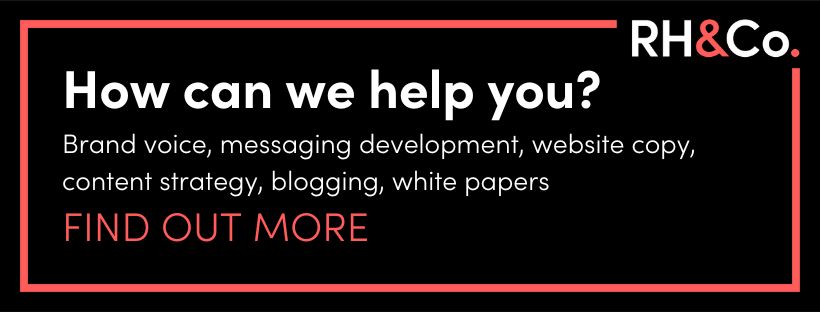
The cost for retained copywriting work
You might want to engage a copywriter on a longer term basis. For example, you may want them to provide you with weekly blog posts, for which you’d most likely be invoiced on a monthly basis. Or you might decide you need someone available for a set number of hours or days each month, with the actual work being decided as you go.
With retainer work, you may want to – or need to – agree to a retainer rate. This is an ongoing (usually monthly) fee that tends to be paid over a set contract period. Agencies and more established freelancers will often get a service level agreement (SLA) in place so everyone knows what’s expected.
It’s harder to put a price on retainer work, as it very much depends on what and how much you need doing. If your retainer is based on a set number of hours or days then it will be fairly straightforward to work out. But if it’s tied to deliverables, then you’re back to the variations of project pricing.
One thing you can be sure of is that you will get more for your money if you commit to a retainer, as the copywriter or copywriting agency you employ can count on the work coming in. By removing uncertainty from their income projections, you can effectively earn yourself a discount.
Why it’s not about price per word
Newspapers and magazines tend to pay journalists per word. This is because the copy being produced is, in relative terms, fairly standard – a news article or a feature. Although we’re generalising for simplicity here, the more words involved, the more work is likely to have gone into the piece.
With copywriting, there is a much greater variety of projects. And word count is a less dominant factor when it comes to deciding on the value of the copy delivered.
Sure, a 3,000 word white paper takes more effort than an 800 word blog post. But a six word strapline can require more input than both – by a long shot. In this case, pricing is much more to do with the value that’s being added through conceptual input rather than the ‘writing’ itself.

Understanding what you’re paying for
One important factor to take into consideration when gathering pricing information from potential copywriters is what’s included in the cost quoted.
Let’s take blogging as an example. On the one extreme, you may have a strategy in place, customer research done, titles set and a series of briefs written and ready to go. In which case, all your copywriter needs to do is craft an engaging narrative to tie together the information in the brief in a way that authentically represents the brand.
With our clients though, we’re much more involved in the process. Blogging contracts begin with a strategy and onboarding session. We advise on topic and title selection. Our briefings draw out the right information from the client’s experts, and keep them from getting lost in the detail. Once a writer has produced the first draft, a separate editor quality checks and proofreads it. We can even support clients with social sharing copy to help get their blog out there.
When we send an invoice for a blogging project or retainer, we’re charging for a lot more than just a few hours of writing.
Factors that will make your copywriting project more expensive
As you’ll have seen in the last section, there’s a lot more that goes into a copywriting project than pure writing. The more elements you add, the more you should expect to pay.
Here are a few non-writing jobs that you might want included in your project:
- Brief creation: Have you got a clear brief written and ready to go or will you need support with this? The more support you need, the more a project will cost.
- Concepting: Creating straplines, campaign messaging, ad copy and so on may require less writing but they need a lot more thinking time, adding to the final invoice.
- Complexity: The more complex your subject matter, the more you’ll need to spend, either on a specialist or on the time it takes to get a generalist to understand it.
- Add ons: Do you need image research or copy uploaded into a CMS? Extra tasks will add to your bill.
- Amends: Although a reasonable number of amends will be included, if you’re anticipating the need for more e.g. because of a high number of people inputting their thoughts, this might cost more.
As you can see, coming up with a straightforward answer to the question “How much does hiring a copywriter cost?” is virtually impossible. The best way to get a sense of how much to budget for your project is to get out there and get a few quotes.
Just remember to be clear about what you really need. After all, it’s better to pay that bit extra and get results, than spend a smaller amount and find it’s been wasted because you didn’t get what you were hoping for.
I’ve written many times about the fact there are no silver bullets when it comes to marketing and blogging is no exception. Even a blog that is well targeted, well planned and well written will take a while to gain traction as you build up your bank of posts and word starts to spread.
However, if you’ve been plugging away at your business blog for months and months and still aren’t seeing results, it could be you’re missing something. Here are some common problems we’ve identified that could be holding you back.
TL:DR
- You haven’t set any goals
- You’re writing about what you want to write about
- You haven’t included a CTA
- You’re not making the most of SEO
- You’re not socialising your blog
- You can’t write
1) You haven’t set any goals
This might sound obvious but how can you know whether your blog is generating results if you haven’t actually set any targets? Whether you want to increase brand awareness, establish your authority as an expert or generate leads, it’s important to be clear about what you’re aiming for and how you’ll measure your progress. By keeping these goals in mind, you’ll also find it easier to know what content to include and what’s merely a time consuming distraction.
2) You’re writing about what you want to write about
In this time poor age we live in, no one is going to read something they don’t actively want to (or have to) read. So your starting point for your blog needs to be your target audience. What subjects interest them? What problems could you help them solve? What stories could you tell that would resonate with them? What insights could you share that will benefit them? If you have your own agenda at the forefront of your mind rather than theirs, you won’t get very far.

3) You haven’t included a CTA
If you don’t have a call to action at the end of your blog post, you’re leaving your reader at a dead end and they’re likely to click away from your site. You need to guide people to take further action, whether that’s emailing for a quote, sharing the link with their network, or simply reading another post.
4) You’re not making the most of SEO
We don’t pretend to be SEO experts but we do know that there are some very simple things you can do to improve your search engine rankings. Most important is to do your keyword research and then make sure you’re including those words and phrases in your blog posts – especially titles. Remember that you need to use H1 tags for your main title and H2 for your subheads because this is how search engines rank page content for importance.
5) You’re not socialising your blog
Especially when you’re first getting started (and in our experience, for as long as you blog for your business), you will need to get active on social media. It’s the best way to get your posts under the noses of the right people. You need to share every single one. Do this more than once, on different days, across as many channels as you can. Test different calls to action. Use images. Create graphics. Basically grab people’s attention any which way you can and make sure they end up clicking through to your website.
6) You can’t write
Gosh, that sounds a bit harsh, doesn’t it? But sometimes you have to be cruel to be kind. And there’s no point in you wasting your valuable time creating post after post after post no one is ever going to read. Writing well isn’t just about being able to spell and punctuate properly. It’s about inspiring and educating and entertaining and provoking your reader. It’s a complicated blend of art and science, as much about psychology as it is linguistics. There’s a reason why people get paid to write – it takes skill, experience and a lot of practice to do well.
There’s no shame in admitting that writing isn’t your strong suit. If you can’t write – or you don’t enjoy it, or you simply don’t have the time – then why not let us help? Contact us today to find out more about our blogging packages, which start at two posts a month.
You know how sometimes you meet someone and you just get a feeling about them that you don’t like? You might not quite be able to put your finger on what it is, but you just sense that they’re a bit arrogant, or condescending, or untrustworthy.
Chances are that if you were to analyse the language they used in their conversation with you, you’d be able to spot a few words that helped you make this impression.
The words we use are incredibly powerful in communicating our personalities and our values. And this is just as true of businesses and other organisations as it is of individuals.
TL:DR
- Building a brand one word at a time
- A statement about relationship
- Creating a positive impression
- Language, gender and equality
Building a brand one word at a time
Brands are built on a million small things. Just look at how much thinking goes into the colours in a logo, for example. Businesses can spend thousands working out whether a particular shade of green is likely to be seen as trustworthy or whether a sample group of clients feels a certain shade of red feels aggressive rather than bold.
Language is similarly important. Your brand voice says a lot about who you are as a business. Are the words you use passionate or playful? Sassy or serious? Are you informative or irreverent?
Today’s consumers care about company values in a way they haven’t always in the past, and they’re more likely to spend their money with businesses that have similar values to their own. So it’s vital that you are clear about who you are as a business and what you stand for. And that you communicate this not only in what you say but how you say it.
Here are some of the language choices we’ve made at RH&Co and the reasons why we’ve made them.

Words that build relationship
There’s something about the word staff that smacks of Downton Abbey. If we were to talk about our team members as “staff”, it would immediately reduce them to functional “human resources”, suggesting a hierarchy that simply doesn’t exist at RH&Co.
Instead, we always talk about “the team” or “our team members”, because that’s how we all see ourselves. Yes, technically they’re employees and Rin is “the boss” (a word she can’t abide) but that’s just not how we work. We operate as a cohesive whole. No one tells anyone what to do. We respect each other’s positions, skills and experience.
In the same way, Rin always talks about the people who work with her rather than for her. The way she sees it, we’re all working for the business, because the business is all of us. The better the business does, the better we all do, and vice versa. Again, it’s a team effort.
Keeping things positive
At RH&Co, we try to speak in a positive way. That doesn’t mean we don’t say things that might inherently have a negative aspect. It’s just that we try to use language and phrasing that presents it in the most positive way possible.
For example, when assessing a new client’s current website copy, one of the things we’ll cover is what’s working and what’s not. The “what’s not working” element is, naturally a negative, but we prefer to frame it in terms of where there might be room to get their copy working even harder for their business. In this way, we keep the focus on the positive end results of changing that copy which isn’t working.
What does this have to do with values? Well, as a business we want people to feel encouraged rather than criticised. Yes, there’s a lot of really terrible website copy in the world. Yes, there are many businesses that aren’t creating content strategically. But being critical isn’t in our DNA. Instead, we’re enthusiastic about the possibilities for improvement and the benefits this can bring to our clients.
Language and DEI equality
How we use language can powerfully express our values around diversity, equity and inclusivity. For example, society tends to default to a male pronoun – chairman, headmaster etc. By deliberately using chairperson, head teacher and so on, we begin shifting the narrative away from gender and towards inclusivity.
Inclusive language can feel like a minefield, with the “rules” seeming to change on a regular basis. If you’re looking for guidance, Oxfam’s Inclusive Language Guide is an excellent resource that covers a huge range of subjects, from gender to disability, and is something we refer to time and again.
Of course, diversity, equity and inclusivity are about much more than language. But don’t underestimate the power that language has to change the status quo. Words make a difference. And the words we choose say a lot about the values we hold.
Creating original content is one of the most powerful ways to establish your expertise as a brand and help build your reputation online. The challenge is that it takes time, effort and probably budget to do it well. Which is why it’s important to repurpose that content so you can share it in lots of different ways and increase the ROI you’re getting.
Repurposing content in different forms also means you’ll catch a larger audience, because everyone has a different way they like to consume information, whether that’s through visuals, the written word, audio and so one.
The first step is to decide what your foundational content is. Are you going to focus on blogging, on video, on podcasts? Perhaps you’ll invest in white papers or webinars. You may well end up using all of them, but it’s hard to do lots of things really well, especially if your budget is restricted. Better to have one as your base and build off that.
For us, blogging is the heartbeat of our content marketing strategy. Blogging is a powerful tool for both social engagement and SEO, it doesn’t need lots of equipment to produce and can easily add huge amounts of value for your audience.
If you blog for your business, here’s how we’d recommend squeezing the most value you can from each post, to ensure that you’re reaching as many people as possible.
TL:DR
- Write a valuable, strategically informed blog post
- Share it on social media – more than once
- Summarise it in your newsletter
- Turn it into a press release
- Film a video blog
- Use your post as a chapter in an ebook
- Record a podcast series
- Create an animation
- Put together a presentation
- Design an infographic
- Send it to a prospect
1) Write a valuable, strategically informed blog post
Step one is to create the original piece of content, in this case your blog post. At this stage, don’t think too hard about how it might be repurposed. You want to focus on making it the best blog possible, with a headline designed to engage your audience or perform well from an SEO perspective, formatting that makes reading it as easy as possible, and most importantly, as much value as you can possibly include. By doing this, your blog will start adding value from the moment it is published.
2) Share it on social media – more than once
Before we move onto repurposing per se, make sure you’re sharing your post as it is on social media – ideally more than once. Your first share can be a straightforward one, introducing the topic and encouraging people to click through and read it by selling the benefits of the post. You can also use questions, stats and quotes pulled from the blog itself to vary the social sharing copy and encourage more engagements and views.

3) Summarise it in your newsletter
Your email list is made up of people who are at least moderately interested in what you have to say, so don’t deny them the chance to read your post. There are several ways you can share posts via email:
- Include the whole post – this reduces the need for your reader to click through, but means you won’t get the website traffic.
- Use the first few paragraphs followed by a ‘keep reading’ CTA, which will hopefully hook people enough that they want to read more.
- Write a headline and short ‘sell’ as part of a roundup of newsletter content, encouraging people to click to read. This is the method we use in The Right Words.
4) Turn it into a press release
If your blog post has a strong news hook, original research, controversial opinion or anything else that might be of interest to a journalist, why not repurpose it as a press release? Make sure to understand the publication you’re pitching to and what you’re hoping to gain e.g. do you want to write a similar piece for them or do you want to go on their expert contact list? Many online publications have submission guidelines that will help you understand how best to approach them.
5) Film a video blog
We’ve already talked about doing one thing well rather than lots of things poorly, but there’s no reason why a well written blog post shouldn’t help you create a video blog. Unlike brand videos, which are worth getting a professional for, video blogs can be filmed with a decent laptop or smartphone.
Again, there are several ways to tackle this. You could go through all of the points from your blog post in one longer video. You could chop it up into different sections e.g. if you have 5 tips, you could film one video for each and make a series. Or you can use video as a teaser, for example sharing just one tip and encouraging people to click through to the blog for more.
6) Use your post as a chapter in an ebook
Chances are that once you’ve been blogging for a while, you’ll have a collection of posts around several key topics. This is a great opportunity to create an ebook. As an example, we had three blog posts covering different sales and marketing challenges faced by B2B businesses, which we then turned into an ebook. These can be useful tools for your sales team to use as part of any outreach campaigns.
7) Record a podcast series
Another way to repurpose a whole collection of blog posts is to record a podcast series. Once again, you can do this in different ways. The most straightforward would be to simply record audio versions of each post for people who don’t have the time to read and prefer to consume their content on the go. But you might also prefer to be a little more free flowing and conversational, using the key points in each post as a starting point rather than a script. Or why not get a guest on to discuss each blog to get a variety of views?
8) Create an animation
This isn’t a cheap or easy option so we certainly wouldn’t recommend it for every post you write. But if there’s a particular piece of pillar content that is foundational to your content strategy, animation is a powerful way of getting – and keeping – people’s attention.
9) Put together a presentation
Next time you’re asked to give a presentation at a networking group or industry event, don’t stress about what you’re going to talk about. Dive into your blog and you’ll find plenty of inspiration. Chances are that many of your posts are a talk in themselves, containing an introduction, several main points, and a conclusion. All you have to do is create the slides.
10) Design an infographic
Depending on the information included in your post, it might lend itself nicely to an infographic format. These are great for sharing on social media and also rank well in terms of image search on Google. Remember, you don’t want to include all the words from your post in the infographic – it needs to be primarily visual, so take the core concepts and use text sparingly.
11) Send it to a prospect
Some blog posts naturally fit within your sales process. For example, you might have a buyer’s guide designed to help your audience make the right choice of product or service. Do put these posts on your website, but don’t leave them there. Send them directly to prospects too. You might do this at the same time as sending a proposal, for example, or as a follow up that feels a little more valuable than “Have you had a chance to consider our proposal?”
While all of these repurposing techniques take a level of input in terms of time and effort, they should ultimately take the knowledge you put into your blog – the research, the concepting, even some of the phrasing – and give it different forms.
By doing this, you get the most business value out of the expertise you put into your post. And you reach more people, both by using different content forms that appeal to different people, and by simply showing up more times in people’s digital landscape.
As a copywriting agency, a big part of what we do is provide ‘done for you’ blog writing services. Which sounds relatively straightforward but is actually quite an intricate process. After all, our expert clients need the work we produce to read like they wrote it – only better.
And they need it to deliver real results, adding value for their audience, building trust and loyalty, and ultimately moving people along the buyer journey towards a place where they are ready to, well, buy.
Over the last four and a half years, we’ve written over 1,000 blog posts for dozens of businesses ranging from local Bristol-based startups to SMEs operating out of a dozen countries around the world. And we’ve learned a lot about what it takes to consistently create high-quality posts that deliver results.
TL:DR
- The strategy session – getting to know you and your audience
- Brief creation – drawing out your expert knowledge
- The writing process – adding our copywriting magic
- Additional services – social sharing and lead magnets
The strategy session – getting to know you and your audience
Before we begin work with a new client we always hold an onboarding and strategy session. This allows us to get clear on the processes that will define the way we work. But more importantly it’s a chance to get to know our clients inside out.
We need to know not just what they do or sell but the benefits their services or products add for their clients and customers. We need to understand what makes them different, what their brand personality is, what their goals are and so much more besides.
We also need to understand the audience they’re speaking to. What are they looking for? What are their pain points and their aspirations? Are they aware of the product or service on offer or do they need educating? What might stop them from engaging with our client?
Only then can we begin to formulate a strategy for their blog. Do we need to focus on one particular audience group e.g. the decision maker rather than the user? Are we trying to engage people early in their awareness journey or those ready to make a purchase? What objections can we handle with a blog post? Where can we add the most value?
“The clients we work with are, without a doubt, experts in their fields. But experts usually have such depth of knowledge that they can find it difficult to see the wood for the trees.”
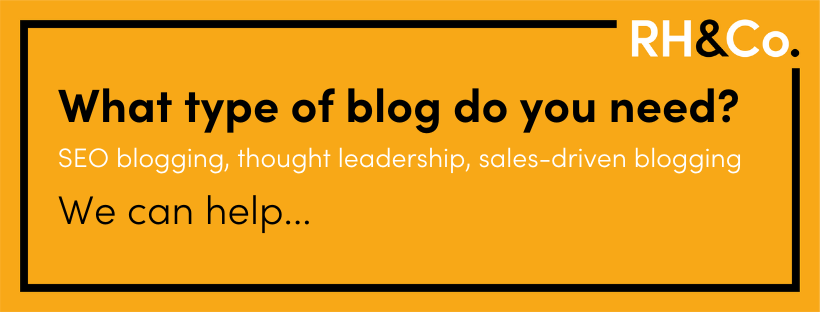
Brief creation – drawing out your expert knowledge
“How can you write for us, if you aren’t experts in what we do?” That’s a question we often hear from prospective clients. And it’s a fair point. We don’t profess to be experts in financial modelling, men’s skincare, app development, Spanish property or leadership development – all subjects we’ve written blog posts about.
That’s why the briefing session is so important. It’s where we use a journalistic approach to draw out the information we need to create credible and engaging posts. This isn’t always the information the client thinks is the most important but the information that their audience is interested in. Our job is to put ourselves in the shoes of the reader, using what we’ve gathered about them in the strategy session to ask “Would I read this? Would I care? What’s in it for me?”
The clients we work with are, without a doubt, experts in their fields. But experts usually have such depth of knowledge that they can find it difficult to see the wood for the trees. They try to pack too much into each post, making it hard for readers to navigate. Or they pitch too high, assuming everyone has the same base knowledge as them rather than explaining important concepts.
As an agency, one of our core skills lies in picking up new subjects quickly, pulling out the most enticing, useful, informative nuggets and packaging these up in a way that makes each and every post engaging and valuable for our client’s audience.
The writing process – adding our copywriting magic
Once we’ve extracted the information we need from our client, the writing team gets to work. There’s no formula here, as each post needs to be bespoke to the client, showcasing their expertise clearly and authentically in their brand voice.
One thing that is common to all the posts we write is that they combine the client’s expertise with our understanding of what makes a blog post engaging. From the title to the opening paragraph, the structure and the subheads, and the call to action at the end, we do a lot more than string a few grammatically correct sentences together.
Although content marketing is all about adding value for the reader, it also has to deliver a business benefit. Our clients may be experts at what they do but they’d be the first to admit they’re not copywriting experts. Our job in writing blog posts for them is to balance the needs of the reader with the needs of the business, keeping strategy at the heart of all we do.
Once a batch of posts has been written, it is edited and proofread by another member of the team before being shared with the client. We use Google Docs to make the process simple, allowing more than one member of the client’s team to add their comments. Once this is done we get the amends done ready for the client to start publishing.
Additional services – social sharing and lead magnets
The thing about blog posts is that they’re only useful if people are reading them. While some of our clients have a well defined SEO strategy, which we use to inform the way we write, others rely on social media engagement. This means they need to be using social media consistently, which many simply don’t have time to do.
Our ‘social sharing copy’ uplift gives our clients three short pieces of copy for each blog post, which they can copy and paste onto their LinkedIn or Facebook feed with a link to the post. They don’t need to think about what to write – it can be trickier than you think to come up with a couple of catchy lines to introduce a piece of content – and they can share each post multiple times without sounding repetitive.
We can also create lead magnets related to the blog posts we are writing – downloads that allow our clients to capture email data and nurture a relationship with potential customers and clients. These include checklists, ebooks, guides and more.
Blogging is a powerful tool for any business. According to DemandMetric, companies that blog produce an average of 67% more leads each month compared to those that don’t. But just bashing out 1,000 words every now and then isn’t enough in a world where over 4 million blog posts are published each day. That’s where we come in.
If you’re ready to transform your blog into a tool that helps you establish your expertise and grow your reputation online, get in touch for a quote today.
Do you know what we always find really sad? The number of poorly written websites in the world. So many businesses invest heavily in design, in development, even in photography. But when it comes to written content, they get the poor marketing manager to cobble something together. Anyone can write, right?
There’s no doubt that design and development are both vitally important elements of a highly performing website. But written content is what your audience will be looking at to determine whether you can do what you need them to, whether you know what you’re talking about, whether they can trust you.
And getting it right is about a lot more than having your A-level English certificate. You need to take a strategic approach to your written content and make sure you’re not making any of these common mistakes.
TL:DR
- It’s hard to understand quickly what you actually do
- There isn’t a clear reason to choose you above the competition
- It’s difficult for people to find what they’re looking for
- You aren’t telling people what to do next
- You haven’t provided any social proof
- How to fix your website content so it delivers results
It’s hard to understand quickly what you actually do
If you teach yoga classes or you produce craft cider or you offer accountancy services, it should be relatively simple to explain what it is your business does. But not every product or service is as easy to understand, especially if you’re talking to an audience that is less knowledgeable than you.
One of the best ways to quickly communicate what it is you do is to focus on the value you can bring to your audience. How will buying from or working with you benefit them? Why will their lives – either personal or professional – be better for having chosen your product or service?
But don’t be too obscure or generic. “Disruptive software that transforms organisational paradigms” doesn’t really mean anything when you break it down. And “A unique formula that’s better for the planet, better for you” could apply equally to a host of eco products from washing powders to facial scrubs.

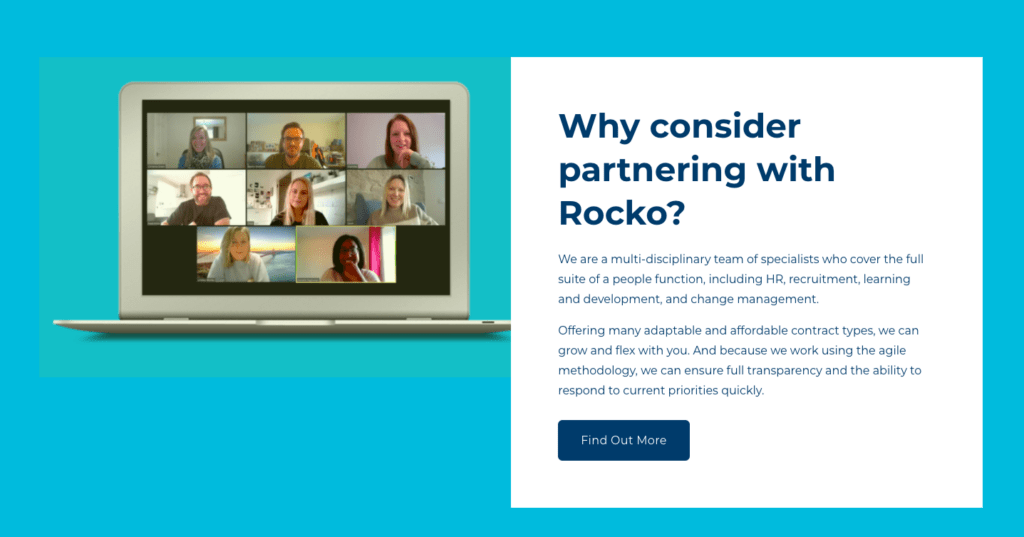
There isn’t a clear reason to choose you above the competition
Clarifying what it is you do and how it’s beneficial to your audience is one thing. Now you’re on their shortlist, you have to show them why you’re the best option for them compared to everyone else on the market.
This is where you have to think about everything from your value proposition to your brand personality – and make sure it’s conveyed in your website copy. Perhaps you’re a recruitment company that prides itself on its strong values and ethics. Maybe you offer the widest range of bike hire options in the South West. It could be that you’ve got multiple awards, hard-to-get accreditation, a stellar client base.
Whatever you believe your audience will most connect with, you need to be showcasing that front and centre in your website content. Chances are it will inform your messaging throughout your site.
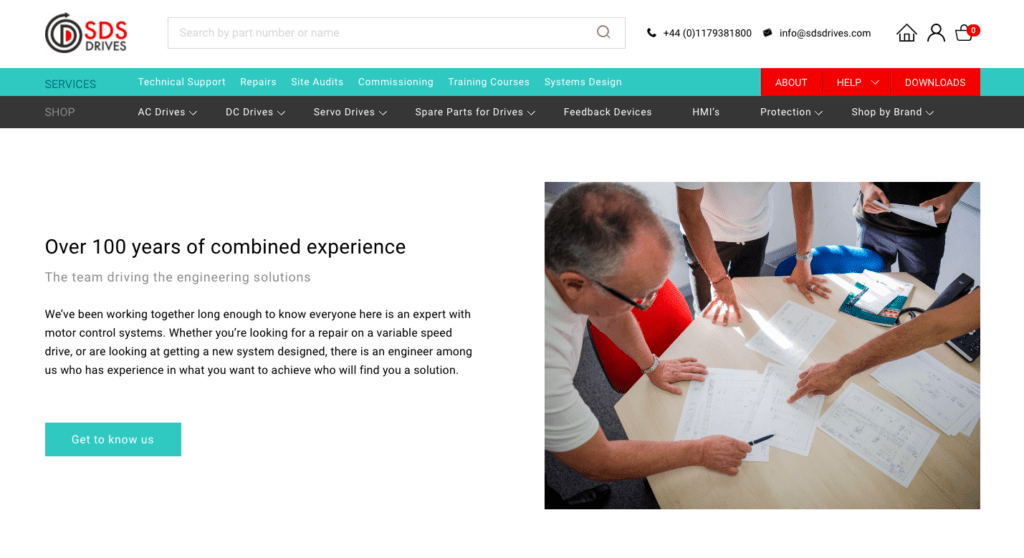
It’s difficult for people to find what they’re looking for
People will navigate through your website in one of two ways. They will use the menu, and they will also scan subheads and follow calls to action (CTAs) through the body copy (the main text on each page). Both options must be as simple as possible to use.
On your homepage, you need to ensure that the body copy links through to each of the most important areas of your website that you might want people to visit. Obviously this should include your product or service pages, but might also include your About page, case studies page or blog.
If you offer a range of product or service categories or work with distinct audience groups, make this as clear as possible on your homepage so people can quickly get to the section that’s most relevant for them.
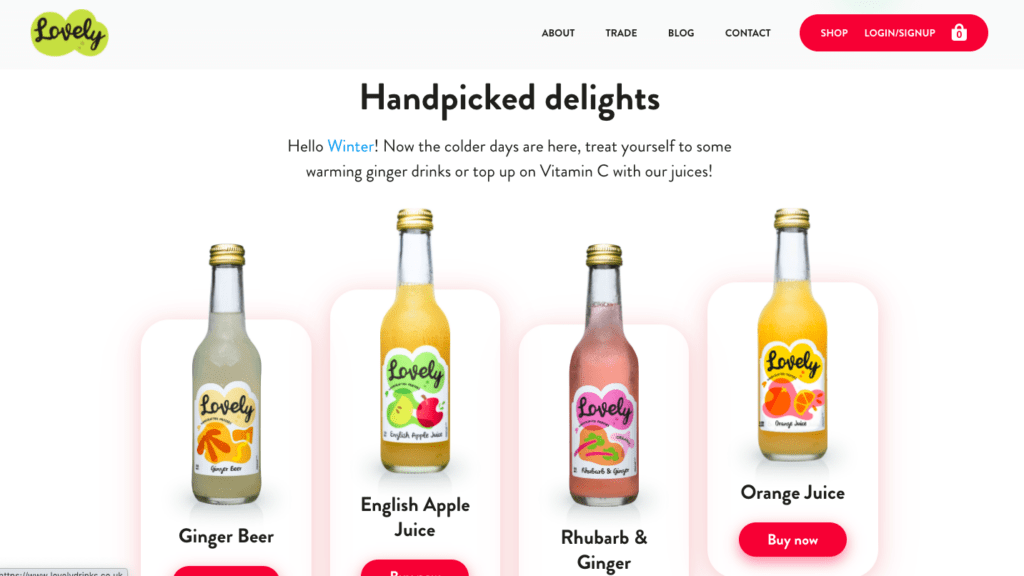
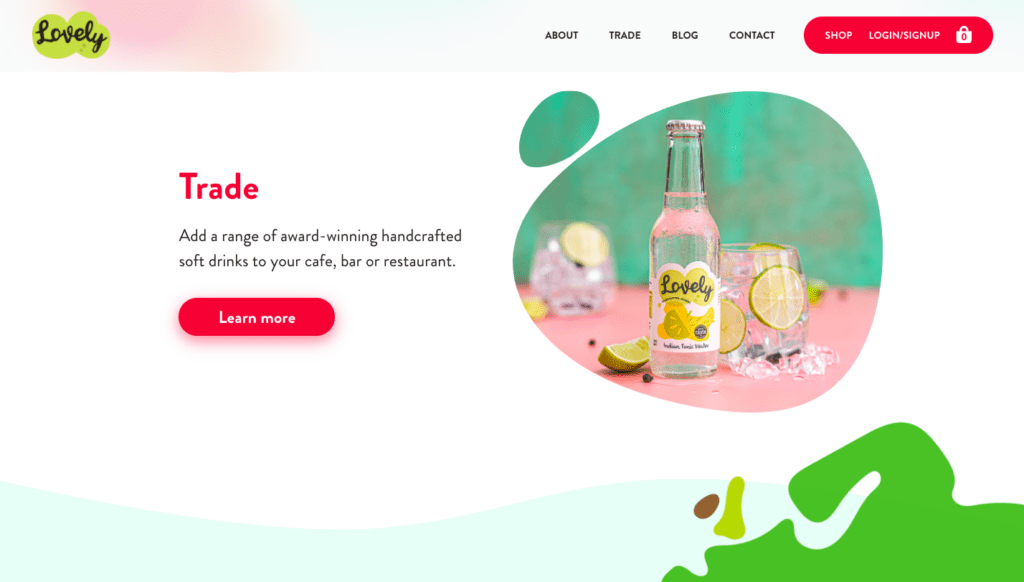
You haven’t provided any social proof
You can say you’re an expert or your product is the best on the market until you’re blue in the face, but you’re never going to be as convincing as someone who has already benefited from working with or buying from you.
Your website should, at the very least, include testimonials. These don’t need to be extensive. A few lines capturing how you made a difference to your customer or client is enough. You can clump these together on a dedicated page but they’re far more powerful spread through your site where people can’t help but see them.
Case studies are even more powerful, especially for service-based businesses and especially if that service is relatively complex. These longer pieces of content should set out the challenge you helped to solve, the way you did it and crucially the results. If you can pepper your case study with quotes from your client, even better.
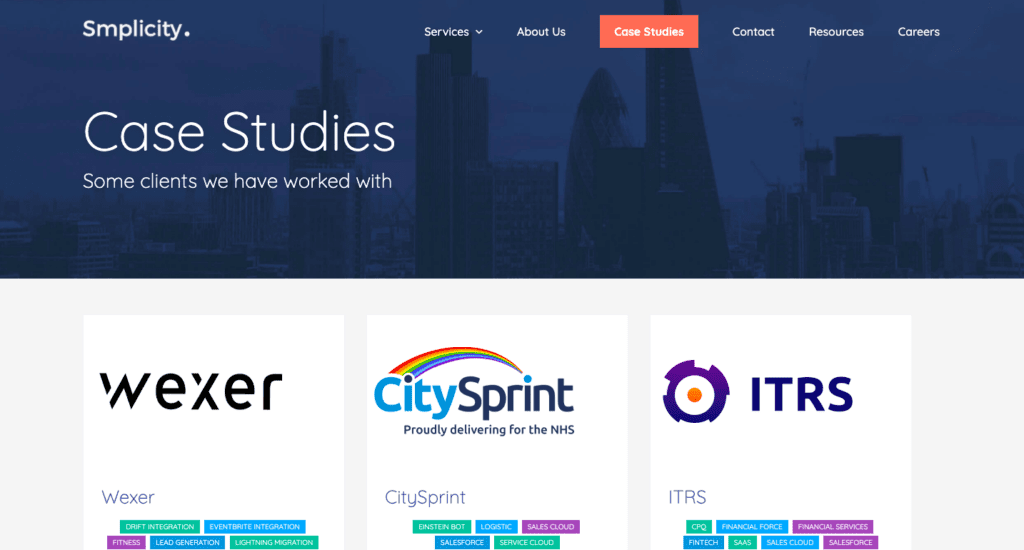
You aren’t telling people what to do next
Getting people to visit your website is the first hurdle. The next is to get them to stay and engage – to actually read enough of the relevant sections of content that they at least move along the customer journey towards working with you. But you don’t want to leave it there.
A call to action is one of the smallest segments of copy on your website and yet it is potentially the most powerful. Your audience needs to know what to do once they’ve finished reading a page – do you want them to buy something, sign up for a newsletter, join a webinar, book a demo?
Be clear on what you want your audience to do and then test different CTAs to see which has the most impact. The difference between ‘buy now’ and ‘add to basket’ could massively increase your conversion rate.

How to fix your website content so it delivers results
If you’ve identified one or more issues with your current website content, don’t panic. Knowing there’s a problem is the first step towards fixing it, after all.
It may be that before you can actually fix the copy, you need to go back and do a bit more work on the fundamentals.
Who is your audience and what problems are you solving for them? How do you communicate what it is that you do so that people will both understand and care? What is your value proposition? Why should people work with or buy from you and not the competition?
One you’re clear on these, you’ve got a much higher chance of creating website copy that resonates. Then it’s just a case of coming up with engaging messaging lines, crafting punchy and persuasive paragraphs to back them up and structuring the copy so that it supports the customer journey.

